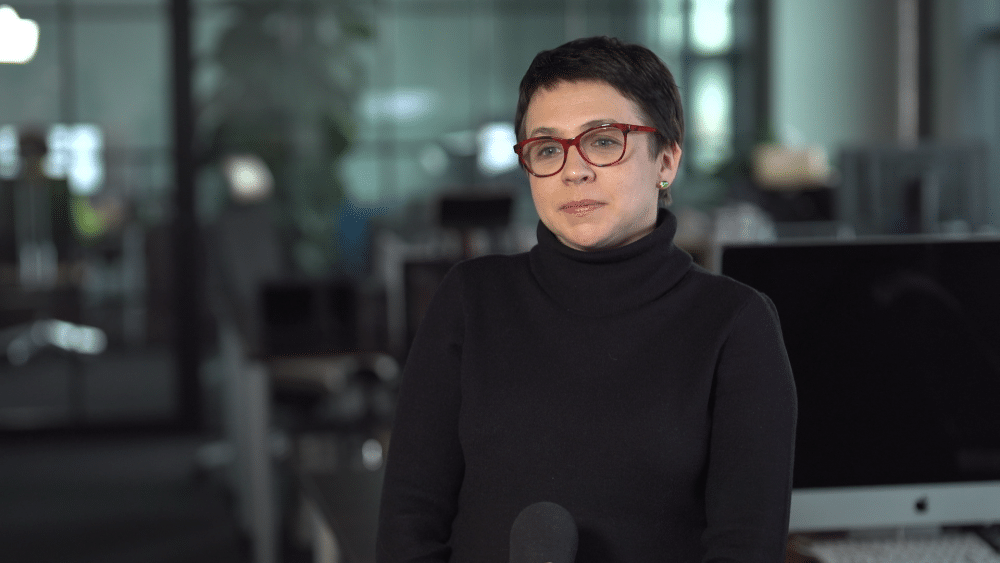Even though we spend an average of approximately 60 percent of our communication time listening, we only remember about 25 percent of what we hear. However, it is possible to learn this skill. Audio education can aid children and teenagers in deeper and more conscious reception of the surrounding reality. It is incorporated into the education program at various stages. As part of the project, a book “Listen to Understand,” a compendium of theoretical knowledge and a collection of practical lesson scenarios for teachers, was created.
“Attentive listening is listening with understanding, without rush, listening related to reflection on the sounds we hear, and I’m not just talking about the acoustic sounds of the space we move in, but also about what we hear from the people who surround us, not only listening to the content but also listening to the form of the message,” says Dr. Kinga Sygizman, a lecturer at the University of Lodz, member of the Audionomia Foundation Council, co-author of the book “Listen to Understand.”
According to WHO, by 2050 one in four people worldwide will struggle with hearing loss. In the opinion of experts, the risk applies to younger and younger people. This is the result of living in noise. Our ears are exposed to hundreds of sounds and unceasing stimulation. We also spend more and more time in front of computers and smartphones. All of this together contributes to the lack of quietness, difficulty concentrating and communication problems. The ubiquitous noise has made us learn to not hear the surrounding sounds.
“Children and teenagers have a problem with attentive listening because they have a problem with concentrating. Stimuli reach us very fast and we feel that we need to change the reception of what we hear every now and then, we need to change the place, there is intensification of stimuli and intensification of words that reach us,” explains the expert.
A study conducted at the University of Minnesota indicates that immediately after listening to someone’s statement, the average person remembers half of what they heard, regardless of how attentively they thought they listened.
Similar conclusions come from reports from studies conducted at Florida State University and Michigan State University. They show that two months after listening to a speech, the average listener remembers only 25 percent of what was said. We tend to forget from half to one-third within eight hours. Often in this first short period of time, we forget more than in the next six months.
According to experts, the widespread inability to listen is largely an effect of the education system. Emphasis is placed on reading, considering it as a basic medium through which we learn, and we have practically forgotten about the art of listening. Active listening requires concentration on the sound, extracting meaning from it, and responding to it.
“There has never been so many people passing us with headphones in their ears, so we listen, but we do not hear, we do not hear because we are overstimulated. Research indicates that over 50 percent of children have contact with smartphones by the age of six, and Audionomia Foundation is trying to show that the sense of hearing is as important a sense as any other and it is worth activating,” says Dr. Kinga Sygizman.
The Audionomia Foundation argues that learning to listen is possible not only in music lessons, but also in Polish, nature, physics, educational care or even mathematics. Audio education is incorporated into the education program at various stages. As part of the project, a book “Listen to Understand,” a compendium of theoretical knowledge and a collection of practical exercises (lesson scenarios) for teachers was created. Proposals for radio plays and sound reports included in the textbook will help introduce sound education classes for the youngest.
Audio education aims to help children and teenagers in deeper and more conscious reception of the surrounding reality, understand the power of sound and the information contained in it. It also teaches to express emotions using tone of voice, intonation, or accents. Effective listening makes sensitivity to one’s own statements and statements constructed by others, teaches respect for others and helps to understand emotions.
“It is also important to make young people aware that they can decide how much of these negative sounds reach them, to realize what a negative sound means to us and what it does to us, why we feel bad in that place. The sense of security is also very important in understanding, because if we speak to another person in such a way that he listens to us, and if we listen to what the other person tells us, establishing this thread of understanding, then we stop feeling alone,” explains the member of the Audionomia Foundation Council.
The expert emphasizes that the environment plays a significant role in learning effective listening. Classrooms in Polish schools are not adapted to this – built with materials that reflect sound, cause echo and make it difficult to focus on the teacher’s words.
“Just a little change in this space, put a carpet, think about curtains in the windows, put books on shelves so that these elements could absorb sound, not reflect it. Changing the space makes the student concentrate on what the teacher tells him dozens of times more, and understand more,” explains Dr. Kinga Sygizman.
The Audionomia Foundation has been operating since 2021. In cooperation with acoustic ecologists, it informs about the effects of acoustic smog, threats resulting from the inability to listen carefully, and also works at the grassroots – conducting mindful listening workshops in schools, kindergartens and universities throughout Poland.
